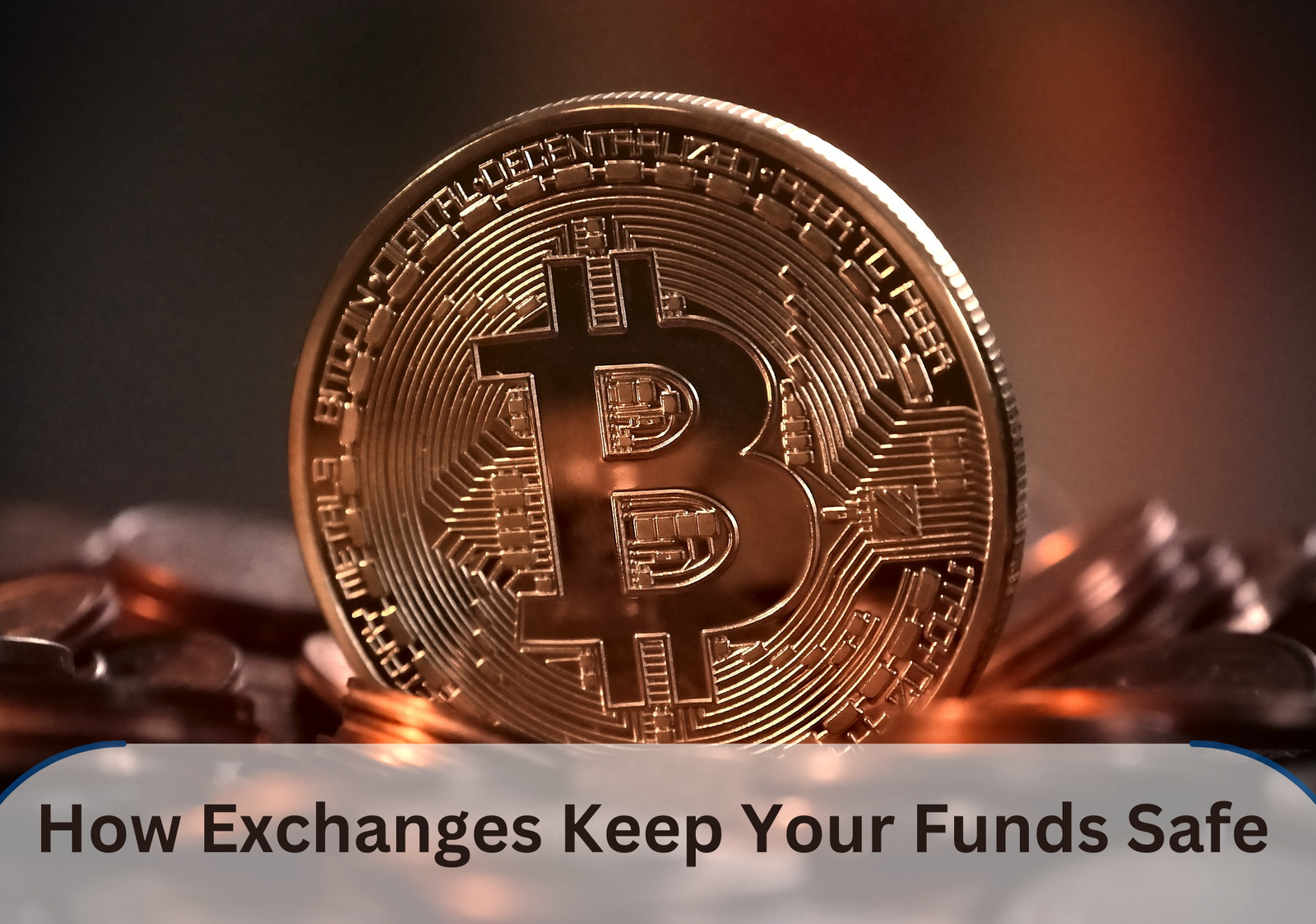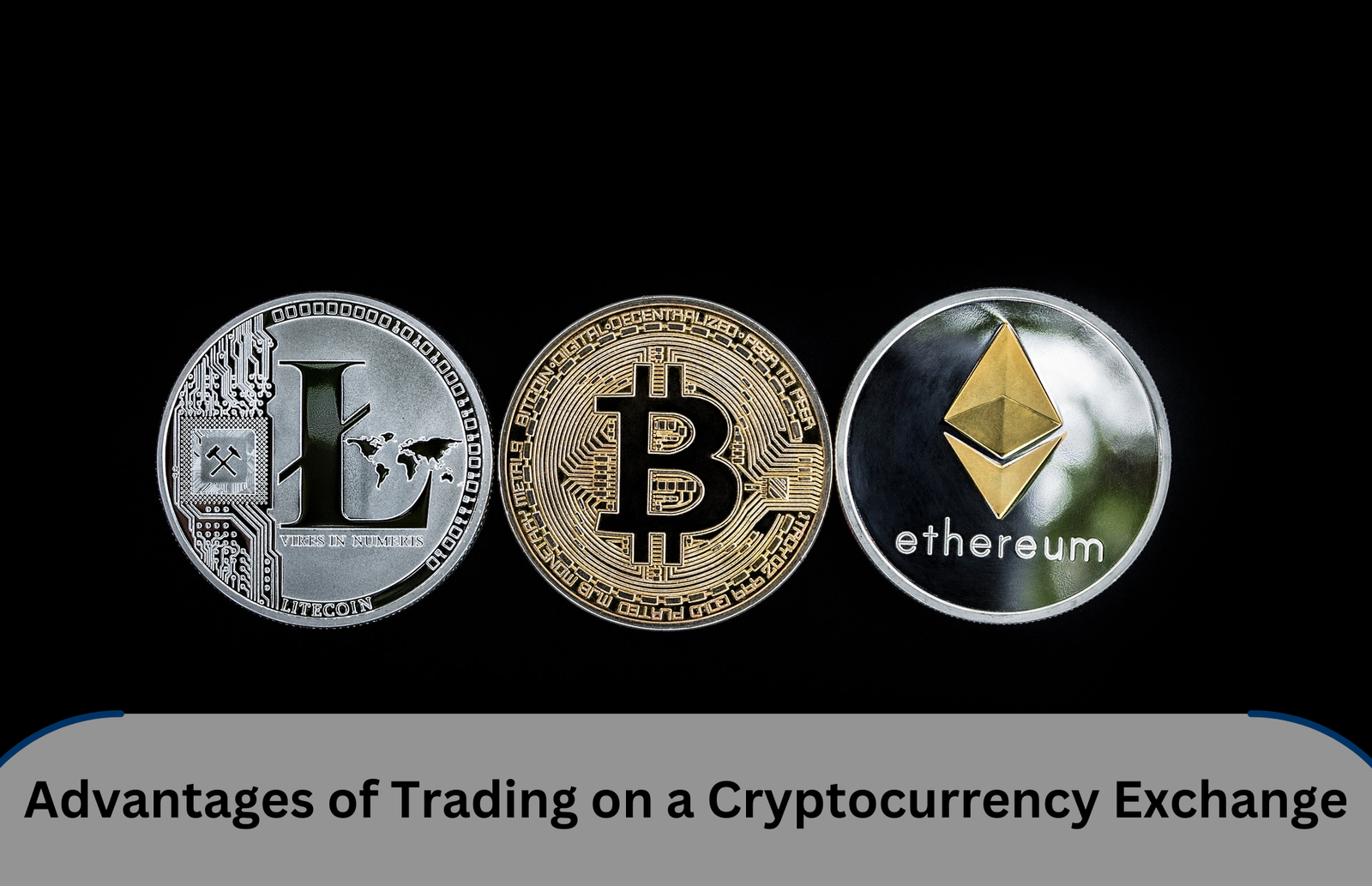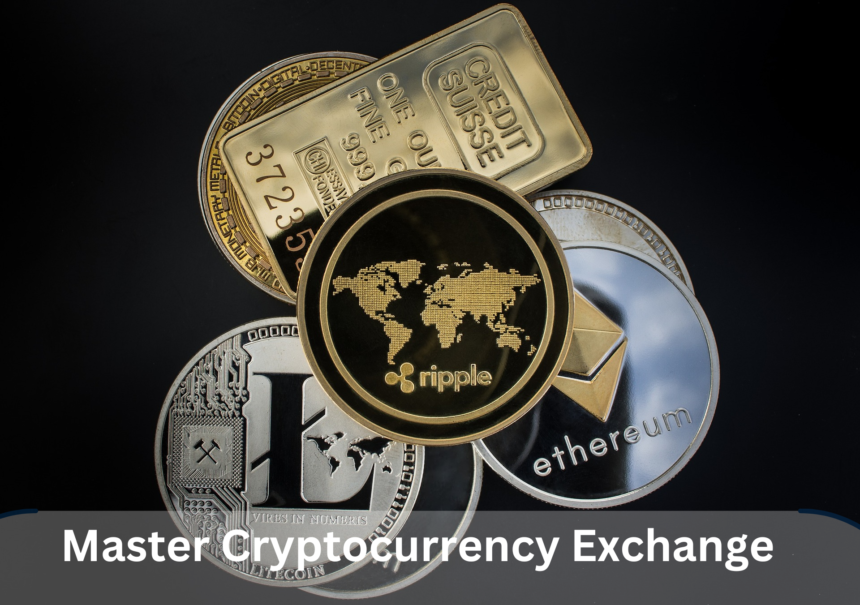Cryptocurrency exchanges have quickly become the backbone of the digital economy. These platforms act as virtual marketplaces, allowing users to buy, sell, and trade a wide variety of cryptocurrencies, including popular ones like Bitcoin and Ethereum, as well as countless lesser-known digital coins. Whether you’re a casual investor or a seasoned trader, using an exchange is essential to getting involved in the crypto world. As more people dive into cryptocurrency, it’s becoming increasingly important to understand how these exchanges operate. Without this knowledge, entering the market can feel like navigating in the dark. Knowing the ins and outs of how to trade, how to keep your assets secure, and how to spot the right opportunities is key. Understanding cryptocurrency exchanges is a crucial first step for anyone looking to confidently engage in the digital asset space. It’s not just about jumping on the crypto trend, but about doing so wisely and safely.
Why Understanding Cryptocurrency Exchanges is Crucial for New Traders
For new traders, diving into the world of cryptocurrency without a solid understanding of how cryptocurrency exchanges function can lead to expensive and frustrating mistakes. It’s easy to get lost in the hype and excitement, but without knowing what to look for in an exchange, things can quickly go wrong. Choosing the right exchange is critical—it should provide robust security to protect your funds, high liquidity for smooth transactions, and a wide selection of cryptocurrencies to trade.
Without this knowledge, beginners are often blindsided by hidden fees, sluggish transaction times, or worse, fall prey to scams. Some exchanges may look legitimate but lack proper safeguards, leaving traders vulnerable to cyberattacks or fraudulent activity. Knowing how to evaluate an exchange’s reputation and understanding its fee structure can help avoid these common pitfalls. The world of crypto is full of opportunities, but only if you’re equipped with the right tools and information to navigate it safely.
What is a Cryptocurrency Exchange?
A cryptocurrency exchange is essentially a digital marketplace designed for the trading of cryptocurrencies. Think of it as a bustling online bazaar where you can swap digital coins like Bitcoin, Ethereum, and others for traditional fiat money (like dollars or euros) or for other cryptocurrencies. These platforms serve as intermediaries, bridging the gap between buyers and sellers.
Here’s how it works: When you want to buy or sell a cryptocurrency, the exchange provides a space where your orders are matched with others. This is done through an order book—a kind of digital ledger that lists all current buy and sell orders. For instance, if you’re looking to purchase Bitcoin, your buy order is placed in the order book. When someone else decides to sell Bitcoin at a price you’re willing to pay, the exchange matches the two orders and completes the trade. This system ensures that trades are executed efficiently and transparently, making the buying and selling process as smooth as possible.
How Cryptocurrency Exchanges Operate
Exchanges operate by seamlessly matching buyers with sellers, which is the core function of their service. When you place an order on an exchange, it’s not just floating in cyberspace; each trade is meticulously recorded in the exchange’s internal ledger. This ledger keeps a detailed account of every transaction, ensuring that everything is documented and can be verified.
To make trading more flexible and tailored to individual needs, exchanges provide a variety of tools. For instance, market orders let you buy or sell cryptocurrencies immediately at the best available price. If you prefer to set a specific price at which you want to execute your trade, you can use limit orders. This way, your order will only be executed if the market reaches the price you’ve set. Stop-loss mechanisms are also available for those who want to minimize their losses by automatically selling a cryptocurrency when it hits a certain price.
These tools give traders the ability to manage their trades more effectively and align them with their investment strategies. Whether you’re looking to act quickly or plan your trades carefully, these features help ensure that your transactions are executed in a way that meets your preferences and risk tolerance.
Types of Cryptocurrency Exchanges: Breaking Down Your Options
There are several types of cryptocurrency exchanges, each catering to different trading preferences and needs. Understanding these various types can help you choose the platform that best aligns with your goals and trading style.
Centralized Exchanges (CEXs) are the most widely used and recognized platforms in the cryptocurrency world. They are known for their high liquidity, meaning you can easily buy and sell large amounts of cryptocurrency without significantly impacting the market price. These exchanges also offer advanced trading tools and reliable customer support, which can be particularly helpful for both novice and experienced traders. However, the trade-off is that you must trust the platform with your funds, as centralized exchanges hold your assets in their custody.
Decentralized Exchanges (DEXs) operate differently by eliminating the need for an intermediary. They facilitate peer-to-peer trading directly between users. This model offers enhanced privacy and security because you retain control of your funds throughout the trading process. However, DEXs often face challenges such as lower liquidity and less intuitive user interfaces compared to their centralized counterparts. This can make trading on DEXs more complex and less accessible for beginners.
Peer-to-Peer (P2P) Exchanges offer a direct trading option that connects buyers and sellers without the need for an intermediary. On these platforms, you can negotiate the terms of the trade, including the price and payment methods, giving you greater control over the transaction. P2P exchanges are especially valuable in regions where traditional financial systems limit access to cryptocurrencies or where users prefer more flexible trading conditions.
Hybrid Exchanges aim to bridge the gap between centralized and decentralized models. They combine the high liquidity and sophisticated trading features of centralized exchanges with the enhanced control and security offered by decentralized systems. On hybrid exchanges, you can trade with the assurance that your private keys are under your control while benefiting from the exchange’s liquidity and user-friendly features. This balance seeks to offer the best of both worlds to users who desire greater security without sacrificing ease of use.
Security Measures: How Exchanges Keep Your Funds Safe

Two-Factor Authentication (2FA) is a must-have feature. This extra layer of security requires you to verify your identity with a second factor, such as a code sent to your mobile device, in addition to your password. It adds an extra barrier for anyone trying to gain unauthorized access to your account.
Encryption is another critical component. It ensures that your personal and financial data is scrambled and unreadable to anyone who might intercept it. A secure exchange will use advanced encryption protocols to protect your sensitive information during transactions and while stored on their servers.
Cold Storage of Funds refers to keeping the majority of your assets offline, away from the reach of hackers. Reputable exchanges store a large portion of their users’ cryptocurrencies in cold storage, minimizing the risk of theft from online attacks.
Anti-Phishing Protection is essential to prevent you from falling victim to deceptive schemes. Phishing attacks often involve fake emails or websites designed to trick you into revealing your login credentials. A trustworthy exchange will employ anti-phishing measures to detect and block these attempts and will educate users on how to recognize potential scams.
By ensuring that these security features are in place, you can better protect your funds and personal information while trading on a cryptocurrency exchange. Always prioritize exchanges that demonstrate a strong commitment to security and transparency.
Step-by-Step Guide to Registering on a Crypto Exchange
When getting started with cryptocurrency exchanges, one of the first steps involves setting up your account. This process is designed not only to get you up and running but also to ensure the platform’s security and compliance with regulations.
Typically, the registration process kicks off with you providing basic information such as an email address and a strong password. This initial step is relatively straightforward and similar to signing up for most online services. However, with cryptocurrency, there’s an added layer of security and legal compliance to ensure both the platform and its users are protected.
After registering, you’ll usually go through an identity verification process known as Know Your Customer (KYC). This requires you to submit personal documents, like a government-issued ID or proof of address, depending on the exchange’s requirements. KYC serves two important purposes: it protects the exchange from illegal activities like money laundering, and it helps ensure that only legitimate users are trading on the platform.
KYC and Identity Verification: Why It’s Required
KYC is a necessary safeguard for most regulated exchanges, aligning with anti-money laundering (AML) laws that aim to prevent illegal financial activities. By verifying your identity, exchanges create a safer trading environment where fraudulent behavior is minimized. It also adds an additional layer of protection for users, ensuring that if someone tries to access your account illegally, they would need to bypass the stringent verification steps in place.
This verification not only secures the exchange but also gives users peace of mind knowing that the platform is prioritizing safety and compliance. While it may feel like an extra hurdle, these steps are there to build a trusted and secure environment for cryptocurrency trading.
Overview of Major Centralized Exchanges: Binance, Coinbase, Kraken
Binance is renowned for its vast liquidity, which ensures that you can buy or sell cryptocurrencies quickly and efficiently without significantly affecting their market prices. Its extensive selection of digital assets means you can trade a wide variety of cryptocurrencies, from the most popular like Bitcoin and Ethereum to lesser-known altcoins. Binance also offers advanced trading tools, including futures and margin trading, making it a go-to platform for more seasoned traders looking to leverage their trades.
Coinbase is celebrated for its user-friendly interface, making it a popular choice among beginners. It provides a secure environment for buying, selling, and storing cryptocurrencies. With its strong regulatory compliance and a broad selection of digital currencies, Coinbase serves as a reliable gateway for those new to the world of crypto. It also features advanced trading options through Coinbase Pro, which caters to more experienced traders with lower fees and enhanced functionality.
Kraken is known for its robust security measures and comprehensive range of services. It offers extensive liquidity and a wide array of cryptocurrencies, including major coins and more obscure tokens. Kraken also provides advanced trading tools such as futures and margin trading, and is well-regarded for its transparency and customer service. Its emphasis on security and a broad spectrum of trading features makes it a solid choice for serious traders who prioritize both safety and sophistication.
These centralized exchanges play a pivotal role in the cryptocurrency ecosystem by providing reliable platforms for trading and investing in digital assets. Their advanced tools, extensive liquidity, and broad range of supported cryptocurrencies make them integral to both everyday trading and complex investment strategies.
Decentralized Exchange Leaders: Uniswap, PancakeSwap, and More
Uniswap operates on the Ethereum blockchain and utilizes smart contracts to automate and facilitate the trading of various cryptocurrencies. Unlike centralized exchanges, which require users to deposit their funds into the platform, Uniswap allows users to trade directly from their own wallets. This decentralized nature not only provides enhanced privacy but also ensures that users maintain full control over their assets throughout the trading process. Uniswap’s automated market maker (AMM) model enables users to trade cryptocurrencies with high liquidity, even for less popular tokens, thanks to its large pool of liquidity providers.
PancakeSwap functions similarly but is built on the Binance Smart Chain (BSC), which offers faster and cheaper transactions compared to Ethereum. PancakeSwap also leverages an AMM model to facilitate trades directly from users’ wallets. It is known for its low fees and high-speed transactions, making it an attractive option for traders who are looking for an efficient way to exchange tokens without incurring significant costs. PancakeSwap’s integration with various Decentralized Finance applications further enhances its appeal by providing users with opportunities to participate in yield farming, staking, and other decentralized financial activities.
Both Uniswap and PancakeSwap embody the core principles of decentralization by eliminating the need for a central authority. This approach not only safeguards user privacy but also empowers individuals with greater control over their transactions and assets. Additionally, their reliance on smart contracts reduces the risk of manipulation and fraud that can occur on traditional exchanges, offering a more transparent and secure trading environment.
These decentralized exchanges have revolutionized the way cryptocurrencies are traded, making it easier for users to engage in peer-to-peer trading and participate in the broader DeFi ecosystem. Their innovative models contribute to the growing adoption of decentralized finance and the ongoing evolution of the cryptocurrency market.
Advantages of Trading on a Cryptocurrency Exchange

Accessibility is one of the primary benefits. These platforms allow users to access the cryptocurrency market from virtually anywhere in the world, 24/7. This constant availability means that traders can react to market changes in real-time, no matter their location or the time of day. Whether you’re at home or on the go, you can manage your assets and seize trading opportunities as they arise.
Diversification is another significant advantage. Cryptocurrency exchanges provide access to a wide range of digital assets beyond just Bitcoin and Ethereum. This variety enables investors to diversify their portfolios, spread risk, and explore various investment opportunities. With hundreds of cryptocurrencies and tokens available, traders can experiment with emerging projects and potentially uncover lucrative opportunities that might not be accessible through traditional financial channels.
High liquidity is also a crucial feature of many exchanges. Liquidity refers to the ease with which an asset can be bought or sold without affecting its price significantly. High liquidity ensures that transactions can be executed quickly and at competitive prices. This is particularly important for traders who engage in high-frequency trading or need to enter and exit positions rapidly. Efficient liquidity helps maintain market stability and reduces the likelihood of price slippage.
Furthermore, many exchanges offer advanced trading tools and features designed to enhance the trading experience. These tools can include real-time charts, technical analysis indicators, and automated trading options. Such features allow traders to make informed decisions based on market trends and data, ultimately improving their chances of success.
Risks of Using Cryptocurrency Exchanges
Market volatility is one of the most significant risks associated with cryptocurrency exchanges. The crypto market is known for its dramatic price swings, which can occur within minutes. This volatility can lead to substantial gains, but it also poses the risk of significant losses. For instance, a sudden drop in the value of a cryptocurrency can erode investments quickly, especially for those who are not prepared for such fluctuations. Understanding and managing this volatility is crucial for anyone involved in cryptocurrency trading.
Security breaches are another major concern. Despite the advanced security measures implemented by many exchanges, no system is entirely immune to attacks. Hacks and data breaches can lead to the loss of funds and personal information. Cybercriminals constantly develop new methods to exploit vulnerabilities in exchange platforms. Users must be vigilant about their account security, using features such as two-factor authentication (2FA) and regularly updating their passwords to mitigate these risks.
Regulatory uncertainty is also a factor to consider. The regulatory landscape for cryptocurrencies is still evolving, with different countries adopting various approaches to the legality and operation of exchanges. Changes in regulations can impact how exchanges operate and might affect users’ ability to trade or access their funds. Staying informed about regulatory developments in your region can help you navigate potential legal challenges and ensure compliance.
The risk of losing private keys is another critical issue. Cryptocurrencies are secured by private keys, which are essential for accessing and managing your assets. Losing these keys, whether through personal error or technical issues, can result in irreversible loss of your funds. Unlike traditional banking systems, there are no recovery options for lost or stolen private keys. Therefore, implementing robust backup and recovery strategies is essential to safeguard your digital assets.
Hidden fees can also catch users off guard. While many exchanges advertise low trading fees, there may be additional costs associated with deposits, withdrawals, or currency conversions. These hidden fees can accumulate and impact overall profitability. It’s important to thoroughly review an exchange’s fee structure and understand all potential costs before committing.
For more information visit our Marketing Section.









